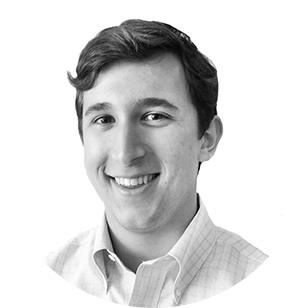How the iPhone 6 could improve your commute — and change the face of mass transit
Apple's new phone could consign the fare card to history, saving transportation departments tens of millions of dollars


For mass-transit riders, it's a common pet peeve. You're about to pass through the turnstile, fare card in hand, just in time to make your train. But the person in front of you is not so prepared. He is still fumbling through his wallet or fishing in his pocket, wasting precious seconds and leaving you little recourse but to give an audible sigh of exasperation.
In metro systems around the world, this scene plays out thousands of times every day. But with Apple announcing the new iPhone 6 and Apple Watch, slow swipers could soon be a thing of the past.
That's because Apple Pay — a new feature that will allow Apple's new watches and phones to be used in lieu of a plastic credit or debit card — also has the potential to radically transform the way we pay for mass transit. If transit agencies are willing to adapt to it, Apple Pay could well kill the fare card as we know it.
The Week
Escape your echo chamber. Get the facts behind the news, plus analysis from multiple perspectives.

Sign up for The Week's Free Newsletters
From our morning news briefing to a weekly Good News Newsletter, get the best of The Week delivered directly to your inbox.
From our morning news briefing to a weekly Good News Newsletter, get the best of The Week delivered directly to your inbox.
Apple Pay relies on near-field communication (NFC), a technology that has existed for years but has boasted few consumer applications so far, especially in the U.S. It's essentially a more sophisticated and interactive version of radio-frequency identification (RFID), familiar to anyone with an E-Z Pass or a college campus ID.
Payment processing companies have tried to introduce RFID technology into credit and debit cards for a few years now, without much success. That hasn't stopped many companies from installing RFID-compatible pay terminals — you've probably seen them at Walgreens or Whole Foods. Not surprisingly, these are among the first retailers that will participate in Apple Pay.
But Apple CEO Tim Cook neglected to mention one area where RFID has already proven wildly successful: mass transit. Nine of the 10 busiest rapid-transit systems in the U.S. issue "contactless" reloadable fare cards (the New York City subway is the one holdout). For some, as with MARTA in Atlanta, paper fare cards have been phased out entirely.
That's where Apple Pay comes in. Since RFID and NFC are based on the same technology, existing systems can be upgraded from one to the other with minimal effort. This week, D.C.-area transit operator WMATA announced that it intended to do just that, in the form of a pilot program for 10 Metro stations and six bus routes.
A free daily email with the biggest news stories of the day – and the best features from TheWeek.com
The goal is clear: soon, anyone with an iPhone 6 or an Apple Watch can theoretically use those devices at the turnstile itself.
This advancement has the potential to revolutionize our concept of the fare card and could also change the way transit agencies do business. Yes, passengers will move through the turnstiles more quickly. (One often hears how smartphones are "glued to your hand"; it's not likely anyone has ever said that about a MetroCard.) But it will also mean that turnstiles could charge a rider's credit or debit card directly rather than using a fare card as an intermediary. For passengers using a weekly or monthly pass, the fare could be purchased on the phone via the cellular data network and directly loaded onto a virtual "fare card" found in the Apple Watch or iPhone Wallet.
That, in turn, means less money that transit agencies will have to spend staffing ticket windows, manufacturing the physical fare cards, and maintaining fare machines. It means that riders can block use of their card if their phone is lost or stolen, and have the money easily refunded. And it means the end of waiting in line to refill your card.
Still, the advent of virtual fare cards does not mean that the physical ones will disappear anytime soon. Not all riders, of course, want or can afford to purchase a $199 phone or a $350 watch. Transit systems that adopt the technology too quickly — or too completely — run the risk of magnifying the socioeconomic gaps already inherent in public transportation.
Moreover, the agencies themselves might actually resist the change. In 2013, New York's Metropolitan Transportation Authority raked in nearly $64 million in fares that were purchased but never used. Once customers can pay with their Apple Watches or iPhones at the turnstile, that figure should drop precipitously.
As a result, it's up to straphangers nationwide to advocate for pay-by-phone and pay-by-watch transit fares. It will save time and money for daily commuters, make the system less intimidating for infrequent users, and reduce costs for transportation agencies in the long run.
A century ago, the subway itself was something to marvel. Since then, it's rare that mass transit has been on the forefront of a new and exciting technology. If metro systems take advantage of the new iPhone and Apple Watch, public transportation can once again reclaim that mantle — and we'll all stand to benefit.
Jacob Anbinder is a policy associate at the Century Foundation, the New York-based think tank. He writes about transportation, infrastructure, and urban affairs.



